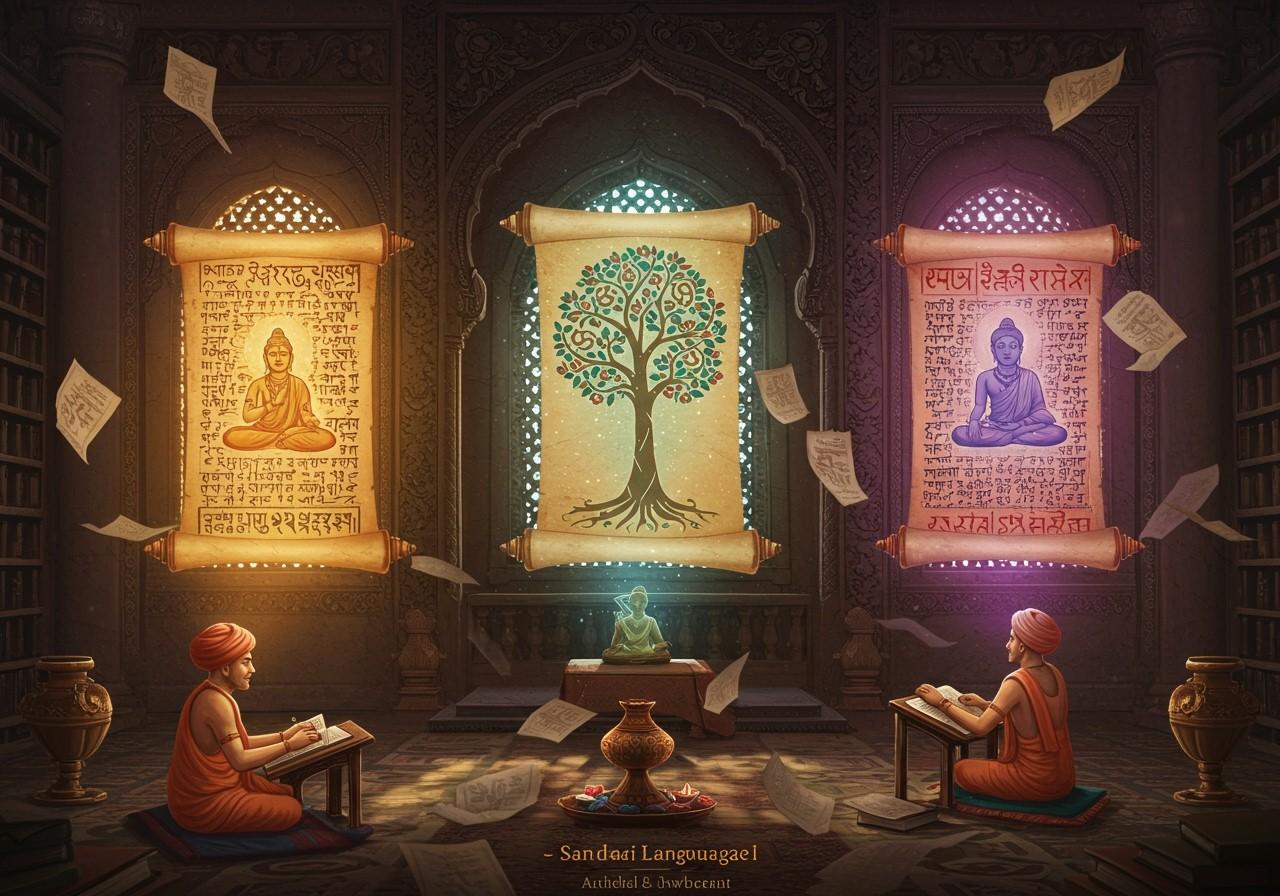
Ancient Indian languages like Prakrit, Sanskrit, and Pali hold immense cultural and historical significance, shaping religious practices and rituals for centuries. This blog delves into the key differences and similarities between these languages, offering insights into India’s rich linguistic heritage.
Historical Background
Sanskrit, dating back over 3000 years, stands as one of the oldest Indo-Aryan languages, with the Rigveda as its earliest known text. It played a crucial role in Hindu rituals, scholarly works, and literary compositions. Prakrit languages, evolving from Sanskrit, were more commonly spoken by the general populace and found their place in Jainism and early Buddhist texts. Pali, emerging around 2300-2500 years ago, became central to Theravada Buddhist scriptures, preserving essential teachings.
Linguistic Characteristics
Prakrit
Prakrit languages are characterized by their phonetic and grammatical simplicity compared to Sanskrit. Variations like Maharashtri, Shauraseni, and Magadhi boast rich literary traditions. This simplified grammar made Prakrit accessible to a wider audience. Significant texts include Jain Agamas and early Buddhist scriptures.
Sanskrit
Sanskrit, with its complex grammar, declensions, and conjugations, holds a vital place in Hindu rituals and scholarly traditions. Its extensive vocabulary enabled the creation of sophisticated literature, including the Vedas, Upanishads, Mahabharata, and Ramayana.
Pali
While simpler than Sanskrit, Pali possesses a rich phonetic structure. It serves a crucial role in preserving early Buddhist literature, such as the Tipitaka, significantly influencing Buddhist philosophy and teachings.
Comparative Analysis
Prakrit vs. Sanskrit
Prakrit’s grammatical simplicity contrasts with Sanskrit’s complexity. Sanskrit, primarily used for rituals and scholarly works, differed from Prakrit’s role as a more accessible language for common people. The influence of Sanskrit on Prakrit is evident in the enriched literary traditions of Prakrit languages.
Prakrit vs. Pali
Prakrit and Pali share grammatical simplicity and phonetic structures. Prakrit features prominently in Jainism and early Buddhist texts, while Pali holds a central position in Theravada Buddhism. The mutual influence between these languages contributed to the richness of their respective religious teachings.
Contemporary Relevance and Usage
Prakrit, Sanskrit, and Pali continue to influence modern Indian culture and religious practices. Efforts to revive Sanskrit are evident in academic circles. Scholarly and practitioner interest in Prakrit and Pali persists, particularly within Jain and Buddhist communities. Online platforms offer valuable learning opportunities for these ancient languages.
Poojn.in: Connecting You with Your Heritage
Poojn.in, India’s leading cultural goods and services store, offers a wide range of products to support your exploration of these ancient languages and related spiritual practices. We provide:
- Sacred Texts and Religious Books: Explore a diverse collection of scriptures and religious literature in Sanskrit, Pali, and other languages, allowing you to delve deeper into ancient wisdom and traditions. Find authentic versions of the Vedas, Upanishads, Buddhist scriptures, and more here.
- Prayer Materials with Sanskrit Mantras: Enhance your prayer rituals with authentic prayer beads, malas, and other items featuring accurately inscribed Sanskrit mantras. Ensure the purity of your practice with genuine products available here and here.
For those interested in deity worship, we offer specialized items for various deities, including Lord Vishnu, Krishna, and others, with accurate Sanskrit inscriptions. Begin your exploration here.
Conclusion
Understanding the nuances of Prakrit, Sanskrit, and Pali provides a deeper appreciation for India’s rich linguistic heritage. These languages have uniquely shaped religious and cultural traditions. While Sanskrit remains vital for rituals and scholarly works, Prakrit and Pali offer accessibility, enriching Jain and Buddhist teachings. The ongoing efforts to revive and learn these languages through online platforms and academic pursuits ensure their enduring impact on Indian culture for generations to come.


